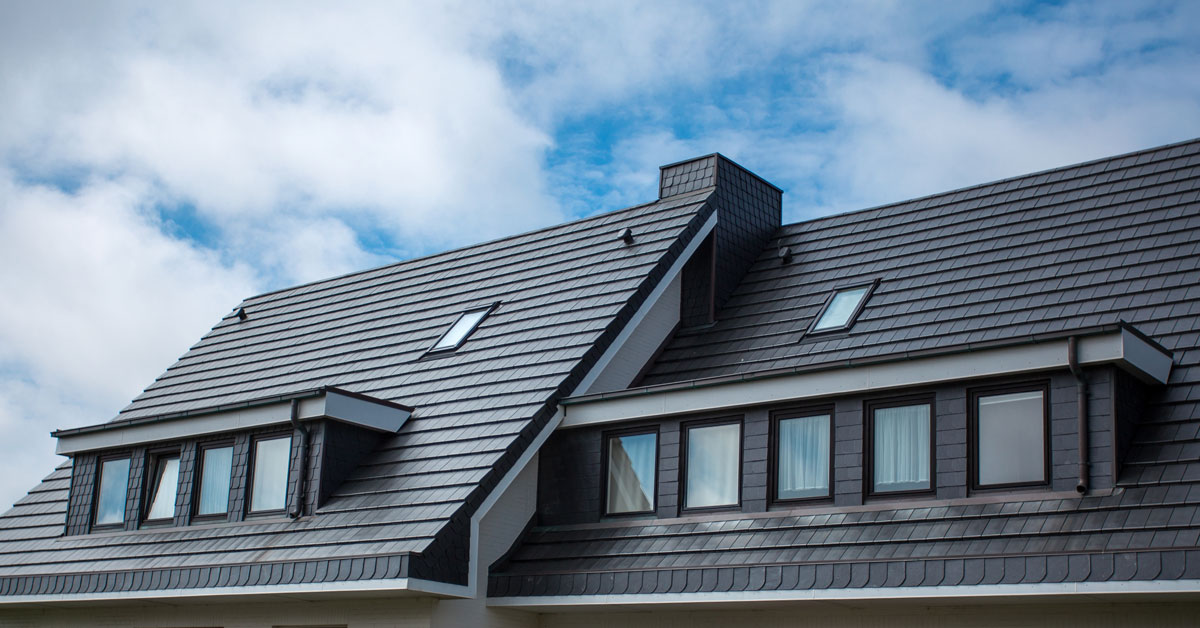Ideal Practices for Ensuring Appropriate Roof Covering Air Flow
A balanced consumption and exhaust vent ratio, frequently 1:300, plays a critical duty, with consumption vents preferably placed at the lower edge of the roofing system for awesome air entry and exhaust vents at the height for warm air departure. Maintaining insulation away from vents is vital to avoid air movement limitation.
Understand Ventilation Fundamentals
Effectively comprehending air flow fundamentals is crucial for making sure the long life and efficiency of roof covering systems. Effective air flow reduces dampness buildup and temperature level extremes in the attic room, both of which can cause considerable architectural damage over time. A well-ventilated roof covering aids in avoiding common concerns such as mold and mildew development, wood rot, and ice dams, which can compromise the integrity of the roof products and the underlying frameworks.
The primary goal of air flow is to promote the activity of air, permitting a consistent exchange between the indoor and outside settings. This balance is attained through a mix of consumption and exhaust vents that interact to maintain optimal airflow. Consumption vents, normally situated along the eaves or soffits, allow fresh air to enter the attic room space, while exhaust vents, usually located at or near the roofing ridge, enable warm, moist air to get away.
Key elements affecting the effectiveness of roofing system ventilation consist of correct placement, ample sizing, and making sure that both intake and exhaust vents are unhampered. Routine examination and maintenance are essential to identify potential obstructions, damage, or ineffectiveness in the air flow system, therefore protecting the roofing's performance and sturdiness.
Kinds Of Roofing System Vents
Roof vents play a vital function in preserving effective attic room air flow and, by expansion, the total wellness of the roof system. Various types of roof covering vents are available, each with unique advantages tailored to details roof covering requirements. Ridge vents, for instance, are set up along the roofing's optimal, enabling cozy, humid air to get away from the attic room. They use continual ventilation and blend effortlessly with the roofline, making them both reliable and aesthetically pleasing.

Soffit vents are mounted under the eaves and job in tandem with roofing vents to ensure a well balanced consumption and exhaust system. By enabling cooler air to enter from below, soffit vents promote the expulsion of warm air through top vents. Gable vents, located on the outside walls of the attic, deal an additional reliable solution, particularly in homes with gable roofings.
Evaluate Your Present Air Flow

Following, consider the age and problem of your roofing products and air flow elements. Older systems might not follow existing building codes or might have deteriorated over time, lowering their performance. Conduct a detailed assessment to recognize any indicators of damage, such as rust, damage, or voids that could dig this jeopardize the system's efficiency.
Additionally, determine the attic temperature level and humidity degrees. High temperature levels and moisture can indicate inadequate air flow.
Setup Best Practices
Efficient installment of roof air flow systems is vital for guaranteeing ideal efficiency and durability. Proper installation begins with comprehending the details ventilation requirements of the structure and the roofing system it covers. This includes computing the proper ratio of consumption to tire vents, normally sticking to the 1:300 policy, which states one square foot of ventilation for every 300 square feet of attic flooring room.

Intake vents ought to be mounted at the roof's lower edge, often in the soffits, to enable awesome air to enter. Exhaust vents, on the various other hand, ought to be installed near or at the roofing's optimal to assist in the exit of warm, damp air.
Seal all vent connections diligently to stop air leaks and prospective water seepage. Use high-grade materials and comply with producer standards to guarantee longevity and effectiveness. In addition, integrating ridge vents with baffles can dramatically enhance air flow effectiveness by avoiding wind-driven rainfall and snow from going into the attic room.
Inevitably, exact setup of roofing ventilation systems mitigates potential problems such as mold and mildew growth, ice dams, and structural damages, making sure the roof covering's honesty and the building's total health and wellness.
Normal Upkeep Tips
Consistency in upkeep techniques is essential to making sure the lasting efficiency of roofing ventilation systems. During these assessments, ensure that vents are complimentary of particles, nests, and other blockages that might restrain air flow.
Make use of a soft brush or about his a vacuum to remove dirt and debris from consumption and exhaust vents. Be cautious not to damage the vent screens or louvers throughout the procedure.
Appropriate insulation is just as important. Guarantee that attic insulation does not obstruct the vents, as this can seriously restrict air flow. Reposition or replace it to maintain an effective obstacle. if any kind of insulation has moved or resolved.
Last but not least, change any kind of harmed or missing parts without delay. Damaged vents, fractured roof shingles, or scrubby flashing can all add to poor air flow and needs to be attended to without delay. Routine upkeep makes sure that the roofing ventilation system functions optimally, therefore prolonging the life expectancy of the roofing system itself.
Final Thought
Making certain correct roofing ventilation is critical for maintaining the efficiency and resilience of a roof covering system. Adherence to the 1:300 intake and exhaust air vent ratio, combined with the critical positioning of vents, is important.
A well balanced intake and exhaust vent proportion, commonly 1:300, plays an essential duty, with consumption vents ideally positioned at the lower edge of the roofing system for cool air access and exhaust vents at the optimal for warm air exit. Consumption vents, generally situated along the soffits or eaves, allow fresh air to enter the attic area, while exhaust vents, typically located at or near the roof covering ridge, enable hot, damp air to leave.
Soffit vents are installed under the eaves and work in tandem with roofing system vents to guarantee a balanced anonymous intake and exhaust system. By permitting cooler air to go into from below, soffit vents promote the expulsion of warm air via upper vents. Adherence to the 1:300 consumption and exhaust air vent ratio, paired with the strategic positioning of vents, is crucial.
Comments on “A Comprehensive Look at Roofing Companies Gainesville Homeowners Recommend”